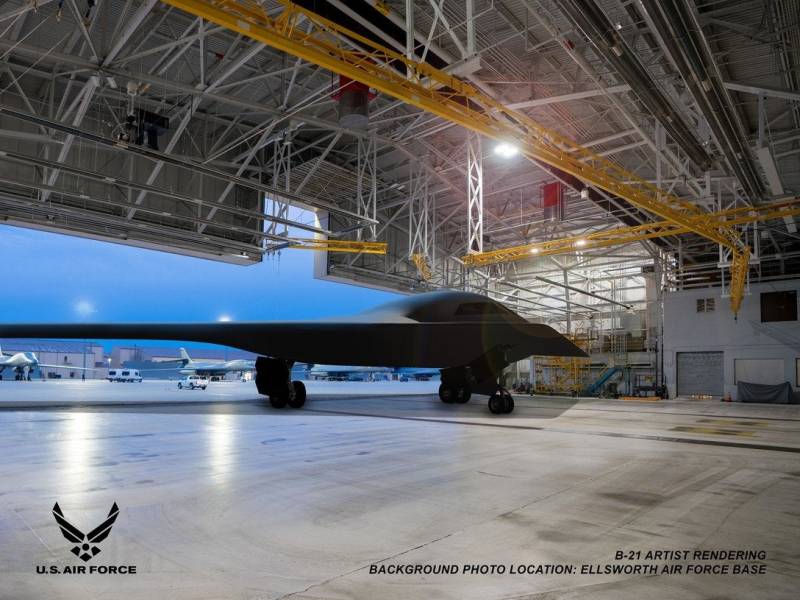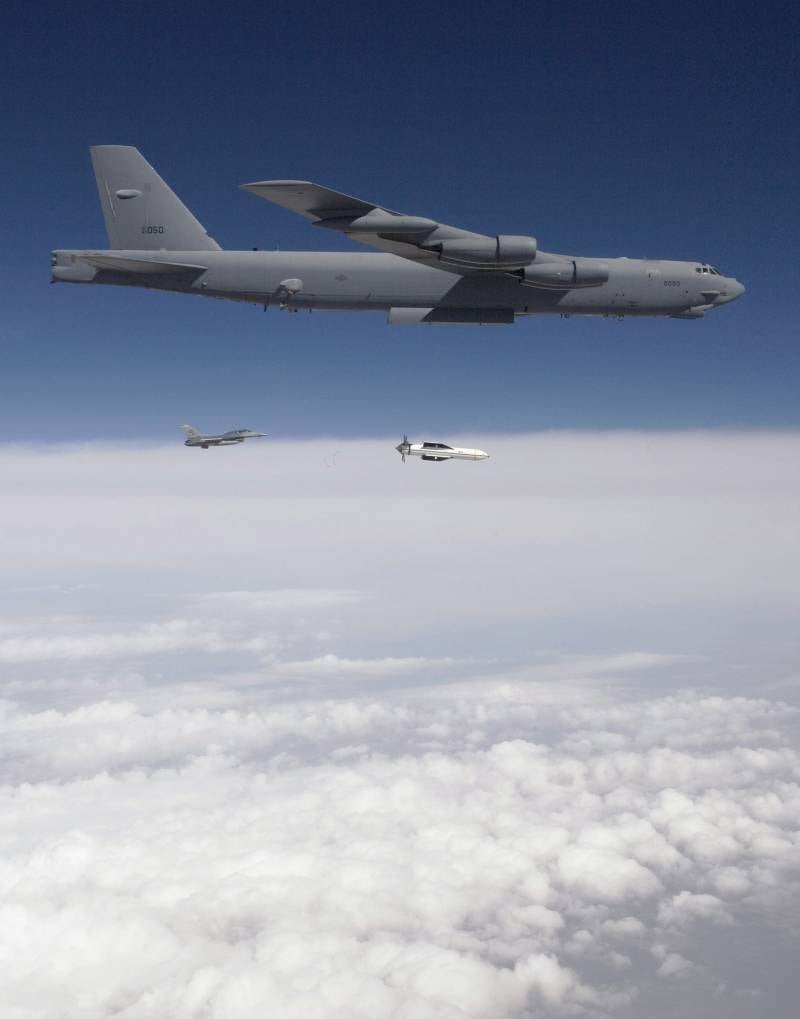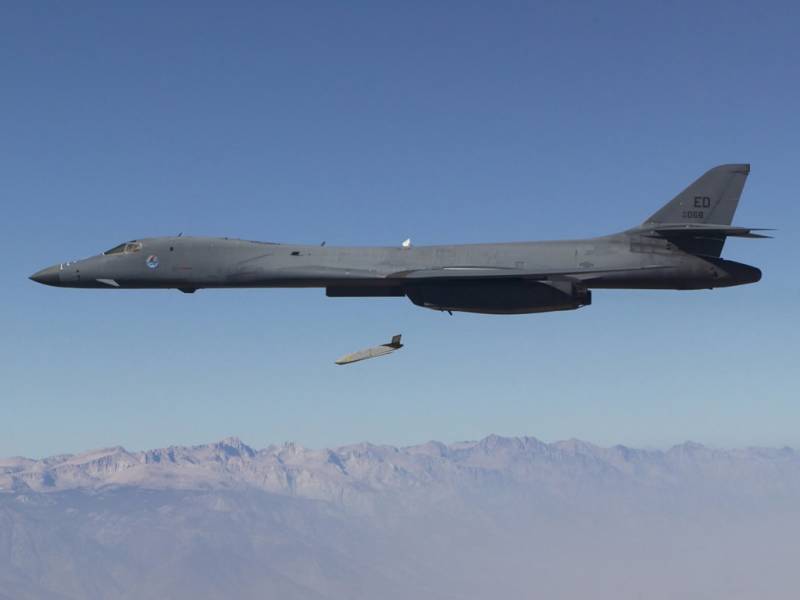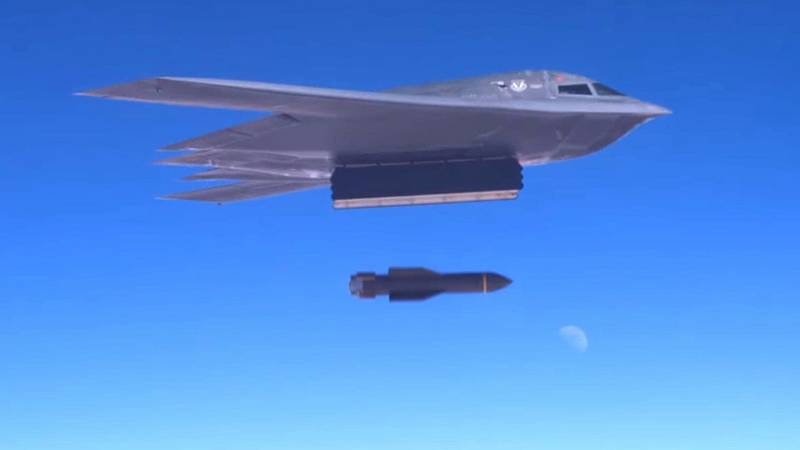US strategic aviation today and tomorrow
At the turn of the eighties and nineties strategic aviation The US Air Force had more than 400 aircraft of all major types. In the future, for one reason or another, the number of active equipment fleets was reduced, and now about 150 vehicles remain in service. The Pentagon is taking some measures to upgrade and strengthen strategic aviation, but they may be insufficient and not fully meet current challenges.
Past and present
In recent decades, the development of American strategic aviation has faced certain problems, which led to specific results. So, in the late eighties, the main part of the fleet consisted of Boeing B-52H Stratofortress aircraft. They were supplemented by exactly one hundred Rockwell B-1B Lancer bombers. A few years later, the Air Force ordered mass production of Northrop Grumman B-2A Spirit stealth aircraft in the amount of 20 units.
The end of the Cold War, the reduction in funding, the development of the resource of equipment and other factors from the beginning of the nineties began to lead to a gradual reduction in the number of fleet long-range bombers. First of all, the park was reduced due to the decommissioning of obsolete and physically obsolete B-52H; retained cars underwent modernization and remained in service.
In the first half of the two thousandths, there was a reduction and increase in the number of B-1B bombers. 93 such vehicles remained in service, a third of which were planned to be sent for storage. It was proposed to direct the released finances to the maintenance of the remaining. A little later, several aircraft returned to service, as a result of which 67 units of equipment were operated in the units. Subsequently, the amount of B-1B decreased again.
At the moment, according to open sources, the US Air Force operates 74 B-52H bombers. The number of newer B-1Bs has so far reduced to 59 units. The newest and smallest is the B-2A - only 19 aircraft. Thus, the total number of strategic aviation barely exceeds 150 units.
It is known that far from the entire fleet of aircraft is suitable for the use and implementation of combat missions. A certain part of the equipment is under maintenance or repair or needs them. So, last year it was reported that only six B-1B cars were in combat readiness. The rest needed repair and restoration. However, in the case of other types of long-range bombers, the situation is much better.
Plans for the future
The Pentagon takes into account the problems of military aviation and takes certain measures. It is proposed to purchase completely new equipment, upgrade existing samples and write off unsuitable for further operation. According to existing plans, the situation in strategic aviation will begin to change dramatically in just a few years. However, according to some estimates, such measures may not be sufficient to solve all existing problems.
At the end of February, Air Force deputy chief of staff for planning, Lieutenant General David Naom announced new plans for the development of bomber aircraft. In the medium term, it is planned to leave only the B-52H out of the existing aircraft fleet. They are once again offered to upgrade by installing new equipment. The issue of remotorization is also being discussed again to increase efficiency and other characteristics.
Requirements for the modernization project will appear this year. According to the results of the new modernization program, 78 aircraft will be in service; B-52H will retain the place of the most massive long-range bomber in the United States. The command assumes that the service life of such equipment will increase again, and some of the aircraft will survive until the sixties - until its centenary.
The fleet of B-1B aircraft will be gradually reduced. The draft defense budget for FY 2021 it is foreseen to write off 17 such machines - probably those in the worst condition and not subject to recovery. In subsequent years, there will be new reductions, and no later than the beginning of the thirties, all B-1B will leave the service.
Subtle B-2A bombers will remain in service until the beginning of the next decade, but modernization under the DMS-M program will be phased out. By this time, the Air Force plans to receive the first production aircraft of a new type of Northrop Grumman B-21 Raider. Their appearance will allow the gradual decommissioning of obsolete B-2A. The operation of the B-2A is not expected to encounter the problems observed with the B-1B.
In 2025, a new long-range B-21 bomber should be put into service. By the end of the decade, the first squadrons on such equipment had reached initial operational readiness. In the future, the number of B-21 will increase; in parallel, it is planned to write off obsolete samples. The exact number planned for the acquisition of the B-21 remains unknown. Estimates of up to 140-150 units appeared in the past, but a different order of numbers was later mentioned.
Insufficient measures
The current state of strategic aviation of the US Air Force leaves much to be desired. Part of the equipment does not meet the wishes of the military, and this issue is regularly raised at different levels. Methods for solving it are also offered. However, not all proposals and new programs receive unconditional support. There is also criticism.
On March 12, Defense News published an article authored by General John Michael Law, former Air Force chief of staff. The general draws attention to local conflicts of recent times and hypothetical wars of the future. He notes that in all cases, long-range bombers are of great importance. Their current number is insufficient for the effective implementation of all available tasks.
M. Law recalled that during the Enduring Freedom operation (2001-2014), long-range aviation had only 20% of sorties and 76% of the munitions used (by weight). In addition, some tasks, such as striking at remote targets using a nuclear weapons, only strategic bombers can do.
Thus, despite all the changes of recent decades, strategic aviation remains the most important component of the air force with its tasks and special capabilities. For its development it is necessary to make every effort, but the existing plans do not fully meet the situation. M. Law points out that a new decade has to start with a shortage of bombers, and a request for FY 2021. will not be able to improve the situation. It is necessary to increase spending on the development of long-range aviation - but Congress allocates money for other directions.
From three types to two
At present, a very interesting situation is observed in strategic aviation of the US Air Force. In the ranks of more than 150 aircraft of three types and different ages. The oldest aircraft began their service in the early sixties, and the newest ones in 2000. Not all aircraft are in combat readiness and can carry out combat sorties. According to various estimates, not more than a hundred are suitable for real operation.
A new bomber is being developed. In the distant future, he will have to replace two types of equipment at once. According to the results of these events, the US Air Force will operate only the old B-52H, which underwent another modernization, and the latest B-21. Depending on the volume of purchases, the latter will be able to become the basis of the bomber fleet.
Nevertheless, the implementation of all current plans requires a lot of time. The first B-21s are expected only in 2025-27, and a fairly large group will appear even later. Modernization of the B-52H also takes time, as does the removal of the obsolete B-1B from the Air Force or the expected abandonment of the B-2A. Thus, over the next years, processes aimed at the development of strategic aviation will be observed, but dramatic changes are being postponed.
Over the years, at various levels, the need to develop long-range aviation has been spoken about, but so far there is no need to talk about real successes. Only one and a half hundred aircraft remain in service, a substantial part of which cannot solve combat missions. The Pentagon is taking measures, but not all of them are sufficient and timely, which in a known way affects combat effectiveness.




Information